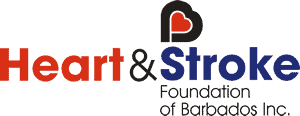Congenital Heart Disease

An abnormality of the heart is present in about 1% of all babies born. Untreated, half of these affected will die in their first year of life. The survivors do fairly well until adulthood when the less severe forms begin to take their toil. It is usual for persons with uncorrected CAD to survive much beyond age 40.
The abnormality takes various forms of structural irregularity. The normal heart consists of four chambers. The two on the right receive from the body blood which has its oxygen supply used up and pumps it to the lungs for re-oxygenation. This is called the pulmonary circulation. The two left sided chambers receive oxygenated blood from the lungs and pumps it to the body. This is the systemic circulation.
Congenital Abnormalities of the Heart Consist of Either:
- Abnormal communications between systemic and pulmonary circulations
- Constructions within one or other circulation. (This is often found in combination with an abnormal communication)
- Displacement or absence of chambers of valves between them or of major inflow or outflow vessels. (Again there may be an associate abstraction and an abnormal communication) symptoms may be dramatic and life threatening and present at birth, or may be mild, moderate, and intermittent, not presenting until the toddler stage. They may even be entirely absent until adulthood when they may then develop and become progressive.
The main symptoms are cyanosis (blue discolouration of tongue, lips and skin.), poor feeding, failure to thrive, syncope (fainting) with effort, fatigue, breathlessness, recurrent chest infections, swelling of the abdomen, swelling of limbs haemoptysis (coughing blood stained sputum), anginal type pain, squatting and palpitations.
Examples of communication abnormalities are:
- Atriol Septol Defect (ASD);
- Ventricular Septol Defect (VSD)
Obstructive abnormalities are exampled by coarctation of the aorta and Pulmonary Stenosis. When severe, patients with obstructive problems need a communicative abnormality in order to survive e.g. Fallot’s Tetralogy. Displacement problems are exampled by transposition of the greater arteries and Ebstein Anomaly.
Prevention and Treatment
For the severe forms is surgical and urgent. The initially symptom less milder forms may be suspected only because of the discovery of an abnormal heart murmur at routine medical examination. Chronic Heart Disease usually requires sophisticated technology such as Echocardiography for detailed clarification. In the milder cases, some correct themselves; some don’t but remain normal then require surgical intervention before the onset of Pulmonary Hypertension, after which it is too late.
The causes of CHD are largely unknown. They may be genetic or environmental. Downs Syndrome is an example of a genetic abnormality with which CHD is associated. Genetic counselling may assist in prevention. The congenitive Rubella syndrome is an environmental cause. Rubella (German Measles) during pregnancy may be prevented by prior vaccination of women of childbearing age. Avoidence of known Teratogenic agents such as Thalidomide and ionising radiations such as x-rays and gamma rays during early pregnancy should help.

